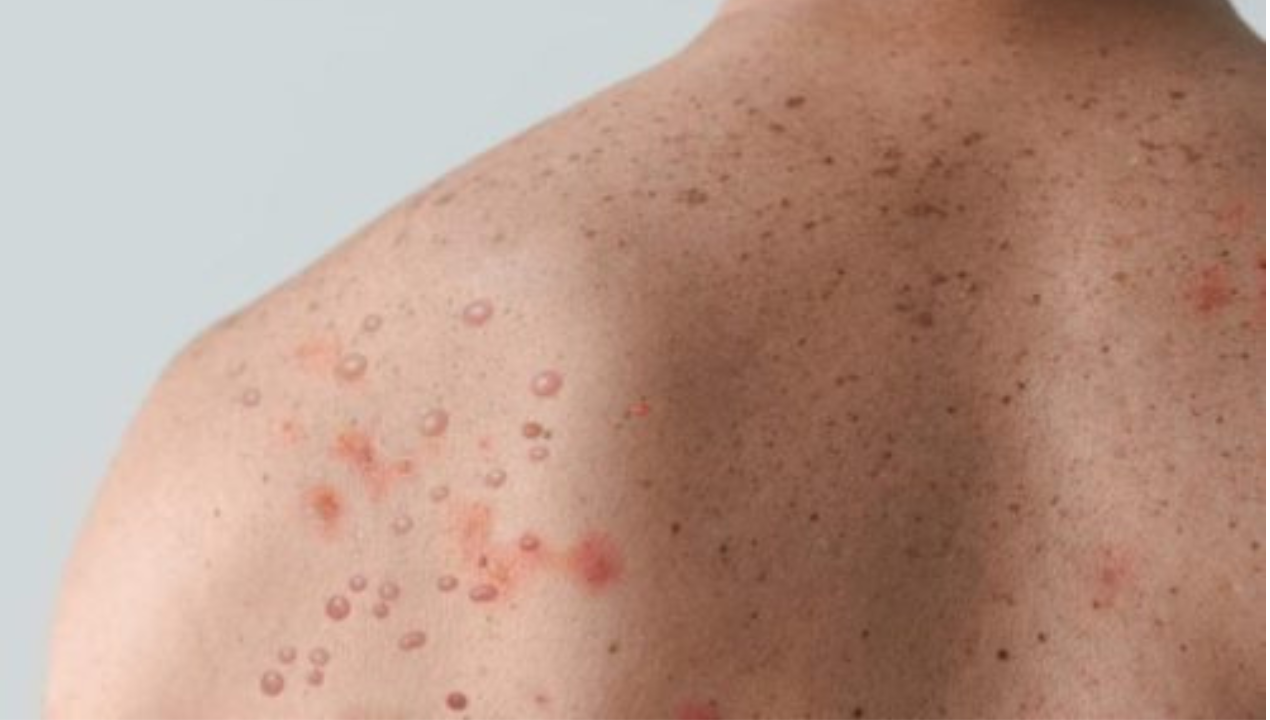You Think You’re Slick? Lubricants and Their Role in Sexual Wellness
By: Indira Maurer, DNP, MSN, FNP-C

By: Madison Davis MPH Candidate, Brown University School of Public Health
Background
The monkeypox virus (MPV) was first reported in 1958 in a Copenhagen research facility containing monkeys1. However, the first human infection was not until 1970 when a nine-month-old child in the Democratic Republic of the Congo was diagnosed1,2. Although the virus has been primarily concentrated in African countries, it has recently spread to other regions2. MPV is transmitted via contact with animals who have infected lesions, body fluids, or respiratory droplets. The median age of those diagnosed ranges from 4-21 years of age2. The fatality rate is ~8.7%; however, there are marked differences between regions2. The escalation in MPV cases is believed to be due to a decrease in smallpox vaccination, which provides cross-protection, and new mutations in the virus1,2.
Signs & Symptoms
The symptoms of MPV include3,4:
The majority of people who are diagnosed with MPV will experience a rash that developed 1-4 days after flu-like symptoms3. The symptoms will usually appear within 3 weeks of exposure and last 2-4 weeks3. Anyone can get MPV, so it is important to be vigilant of developing symptoms and new or worsening rashes.
Current Outbreak
According to the Centers for Disease Control and Prevention website, between January 1, 2022, and July 29th, 2022, there have been 22,485 confirmed cases across 79 countries3. The United States, Spain, Germany, and the UK have reported the highest cases at 5,186, 4,298, 2,595, and 2,546 cases respectively3. In the United States, New York, California, and Illinois have the highest confirmed case numbers, reporting 1,345, 799, and 419 cases respectively3. Belgium was the first country to implement a 21-day quarantine for those infected1. The infections are reported to be both caused by human-to-human transmission and animal-to-human transmission1.
The CDC is working to collaborate with other countries who are also experiencing a marked increase in MPV cases to expand testing and track the evolution of the virus3.
Spread, Testing & Prevention
MPV can spread through contact with infectious rash or bodily fluids, respiratory droplets during prolonged face-to-face contact, touching objects or fabrics that infectious rash or fluids have touched, or being scratched or bitten by an infected animal3. The infection can be spread from the time that symptoms start to when the rash has fully healed3.
If a person is experiencing symptoms of MPV, a lesion swab can be conducted in order to test for the presence of the MPV4. Ideally, there should be more than one specimen taken from two separate lesions on different parts of the body5. The lesion should be “unroofed” to properly sample the secretions5.
Prevent close, skin-to-skin contact with people who have a rash associated with MPV and avoid objects an infected person has used such as utensils, cups, bedding, or clothing3. Furthermore, washing your hands frequency with soap and warm water and consistently using an alcohol-based hand sanitizer can help prevent infection3.
Recommendations for Providers
The CDC, Health Alert Network (HAN), and Clinician Outreach and Communication Activity (COCA) ask providers to be alert to patients who are experiencing a new rash and have other associated MPV symptoms3. Providers can also conduct testing through the Laboratory Response Network, advise patients on health monitoring, and track confirmed cases3. Additionally, providers can subscribe to the COCA Now email updates and Health Alert Network messages to receive information on testing options. Lastly, providers are able to educate patients on and distribute vaccines to individuals who may be diagnosed or a part of a high risk population3.
When treating patients with known or suspected MPV, it is recommended that providers don PPE for contact precautions including eye protection, a fit-tested N-95 or equivalent, gown, and gloves5. Furthermore, surfaces should be decontaminated, and the patient should be isolated5.
Given the similarity in genetic makeup of the smallpox virus and MPV, it is believed that the antivirals and vaccines that aid with smallpox treatment will also help with MPV3. The CDC recommends antiviral treatment (tecovirimat (TPOXX), cidofovir, and brincidofovir) for severely ill and immunocompromised patients3. These medications can be accessed through the CDC by submitting a request to the state and territorial health departments5. Furthermore, PEP vaccines, ACAM2000 or JYNNEOS, are recommended for intermediate to high-risk individuals who have been exposed via unprotected contact with an infected rash or being less than six feet from an unmasked person for more than three hours without wearing a surgical mask4. Supportive care is also recommended as treatment, including fluid maintenance, supplemental oxygen, and treatment of bacterial skin lesions where applicable5.
Given the potentially stigmatizing nature of MPV, the CDC has released a report on how to effectively communicate MPV information without using stigmatizing language or marginalizing specific groups.
More Resources
Given the evolving and novel nature of MPV, it is important to educate ourselves as providers to ensure we are implementing best practices for our patients. Here are some additional sources for reference:
Monkeypox vaccines in pregnancy
The use of JYNNEOS as a PEP vaccine
Monkeypox transmission in healthcare facilities
Social consideration for monkeypox response
References
By: Indira Maurer, DNP, MSN, FNP-C
NPACE Changes: Feedback really does drive what we doBy: Terri Schmitt PhD, APRN, FNP-BC, FAANPExecutive Director, NPACE
NP Week 2024: We've come a long way baby!By: Terri Schmitt PhD, APRN, FNP-BC, FAANPExecutive Director, NPACE